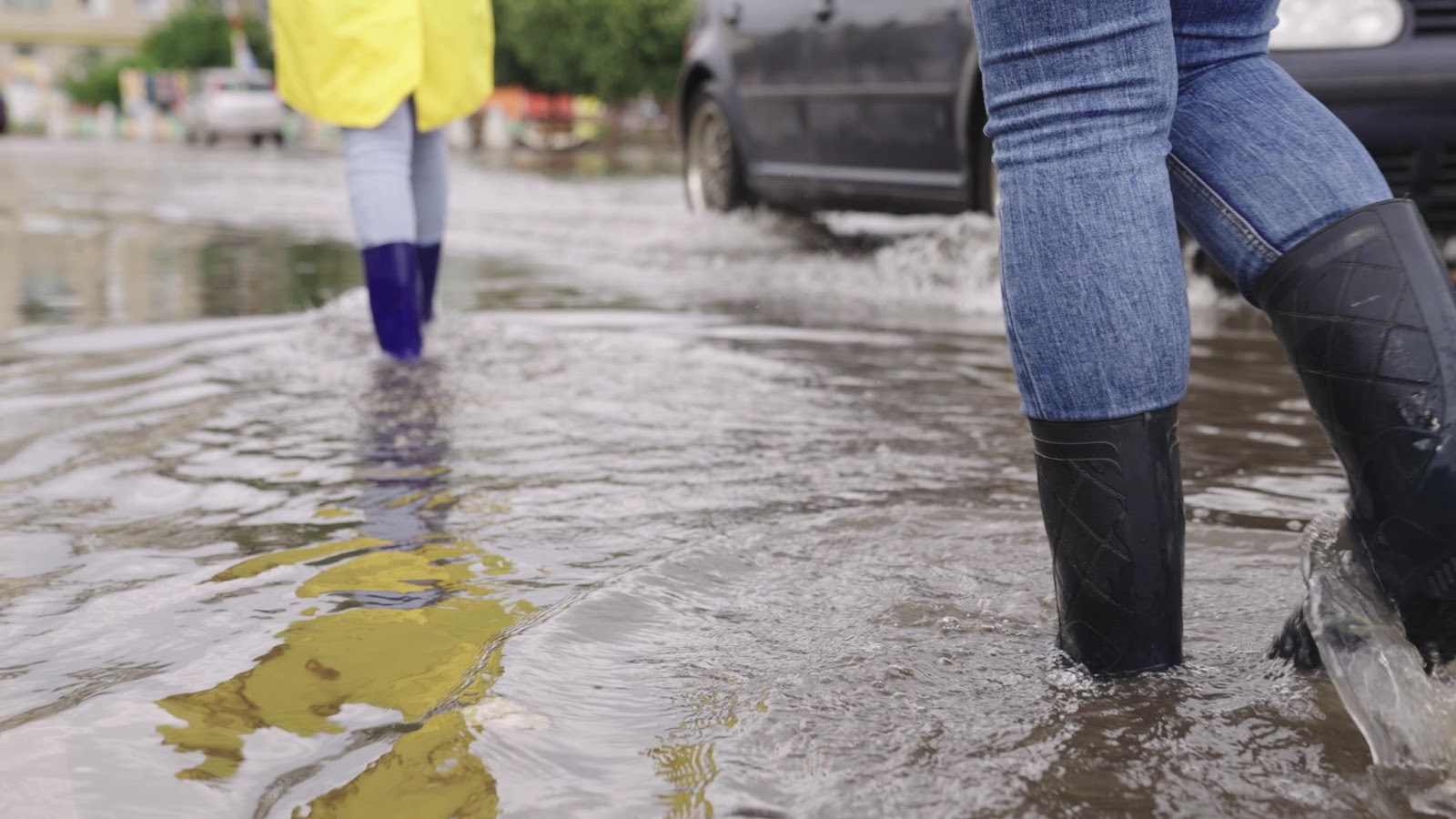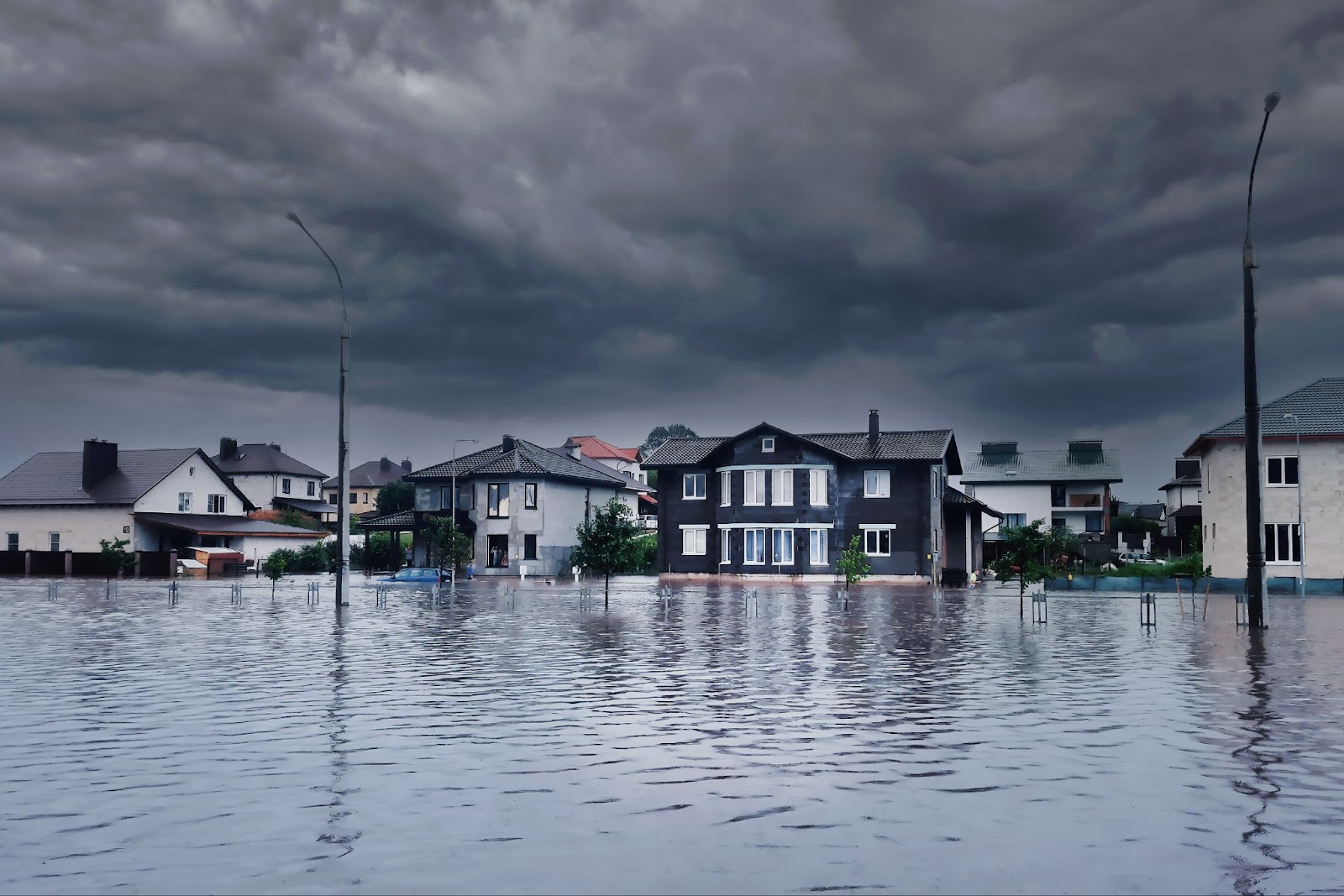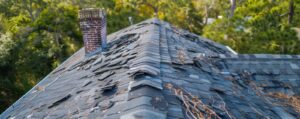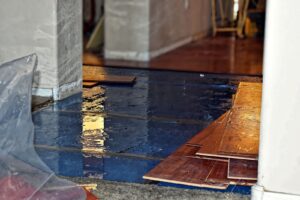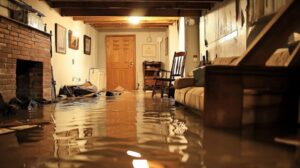Each year, the arrival of spring thaws brings blooming flowers but also the looming threat of flood damage. Floods effortlessly claim top ranks among the most common and widespread natural disasters, striking with little warning and capable of wreaking untold havoc on unprepared properties.
Being prepared spells the biggest difference between a minor inconvenience and a catastrophic loss. Many homeowners, unfortunately, overlook the importance of taking proactive steps to mitigate potential flood damage until it’s too late. Understanding the risks associated with flooding, implementing proper drainage, and fortifying your home’s defenses can vastly increase its resilience.
We’ve provided a comprehensive guide to safeguarding your property against spring floods that will empower you with the knowledge and tools to protect your home and peace of mind.
The importance of proper drainage
Proper drainage is a cornerstone of flood mitigation for properties at risk for flooding. Systems such as sump pumps, French drains, and other water pumps are crucial in redirecting water away from the foundation and basements, areas that are particularly prone to flooding.
These measures significantly decrease the chances of basement flooding and the accompanying water damage. Incorporating adequate drainage solutions involves several possible strategies:
Sump pumps
These pumps actively remove water that has accumulated in a sump basin, typically found in the basement of homes.
French drains
A French drain is a slightly sloped trench filled with gravel or rock that contains a perforated pipe to redirect surface water away from an area.
Regular maintenance
Ensuring that gutters, downspouts, and drains are clear of debris is critical, as blockages can cause water to overflow and infiltrate the property.
Battery-operated backup pumps
You may also want to consider battery-operated backup sump pumps, especially in areas with a high threat of flooding or frequent power outages.
Homeowners should also be aware of local initiatives that support flood prevention, such as community-level drainage projects or the availability of sandbags during peak seasons. Participating in these programs and integrating community resources with individual measures enhance overall preparedness and fortify defenses against the relentless challenge of spring floods.
Preparing Your Property for Flooding
Preparation is crucial for protecting your property from spring flooding. Elevate essential electrical appliances above projected flood levels, clear debris from drainage systems to prevent blockages, and anchor outdoor equipment securely. Store valuables and documents in waterproof containers in elevated areas, and prepare an emergency kit with supplies and important medications for potential evacuations.
Reinforcing Windows and Walls
Seal windows properly with caulking to avoid leakage. Invest in high-quality, water-resistant window well covers if you have below-grade windows. They provide an extra layer of protection against pooling water.
To reinforce walls, start by regularly inspecting your home’s exterior for cracks and promptly sealing them to prevent water entry. Apply waterproof coatings and sealants to basement and ground-level walls to minimize water seepage.
Consider using temporary flood barriers or sandbags in immediate threat areas to block entry points and further protect your property from flooding.
Protective Measures During Heavy Rain
During heavy rain, safeguard your property by cleaning gutters to prevent overflow, checking roof integrity, and securing doors/windows. Install check valves in sewer lines and ensure proper yard grading. Stay informed about local flood risks.
Responding to a Flood Emergency
During spring floods, stay informed about weather updates and flood maps to anticipate dangers. Prioritize safety by identifying high ground and be prepared to evacuate if necessary. Turn off utilities and avoid walking or driving through floodwaters.
Prepare an emergency flood kit with water, food, first aid supplies, communication tools, and important documents. Include supplies for pets and ensure everyone knows where the kit is stored. Install battery-operated backup pumps for sump pumps to prevent basement flooding during power outages.
Maintain communication with emergency contacts and practice flood safety tips. Regularly check for downed power lines and hidden building damage. Communicate with neighbors for support and updates during flooding.
Recovering from Flood Damage
After floods subside and authorities deem it safe to return, swift action is crucial to safeguard your property. Don protective gear and inspect for hazards like loose power lines or structural damage.
Document damage thoroughly with photos and notes, including wide and close-up shots of affected areas and items. Note water levels and keep damaged belongings until the insurance adjuster assesses them. This documentation is essential for repairs and insurance claims.
Mold Prevention and Remediation
Mold damage can occur within 24 to 48 hours following a flood, making immediate action pivotal. Start by removing wet contents, such as carpeting and bedding, as soon as possible. Use fans, dehumidifiers, and open windows to circulate air and thoroughly dry your home.
Disinfecting affected surfaces with a mixture of water and bleach will kill most strains of mold.
Even if you’re proactive, professional mold remediation may be necessary for extensive mold problems or hidden moisture.
Reviewing and Updating Insurance Policies
Understanding the coverage of your insurance policies and reviewing them annually is an important aspect of spring flood preparation:
Verify coverage
Regularly review your insurance policies to ensure adequate coverage for not just the structure but also the contents of your home.
Consider flood insurance
Standard homeowner’s insurance typically doesn’t cover flood damage. If you are in a flood-prone area, purchase a separate flood insurance policy.
Keep documentation current
Inform your insurance company about renovations or major purchases that could affect the value of your property.
Understand the claims process
Familiarize yourself with the flood claim procedure of your insurance so you can act promptly in the event of a disaster.
Insurance policy checklist
| Item to Check | Considerations |
| Deductibles | Be aware of the deductible amounts and any changes from year to year. |
| Coverage Limits | Ensure the coverage limits are sufficient for your home’s current value. |
| Exclusions | Know what is not covered under your policy to avoid surprises. |
| Flood Insurance | If your area has changed flood risk levels, consider adjusting accordingly. |
By being proactive and preparing ahead of time, you will protect yourself and your property from the devastating impact of spring floods.
Be prepared for anything with Total Flood & Fire Restoration
In the wake of a flood, finding the right restoration partner becomes essential for a successful recovery journey. At Total Flood and Fire Restoration, we understand the urgency and complexity of restoring your property after such a devastating event. Our team specializes in providing customized solutions that address your specific needs and ensuring a seamless and efficient restoration process from start to finish.
With years of experience and a commitment to excellence, trust us to handle every aspect of the restoration with professionalism and care. From assessing the extent of the damage to implementing thorough cleanup and repair procedures, we prioritize restoring your property to its pre-flood condition as quickly as possible.
Contact Total Flood and Fire Restoration or call 385-503-2846 24/7 and experience peace of mind knowing your property is in good hands.


